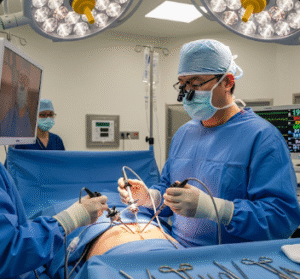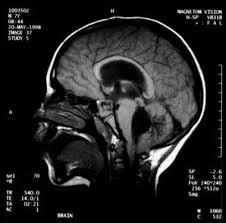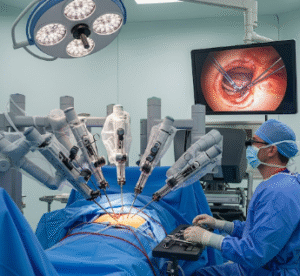Overview
Foraminotomy is a minimally invasive spinal surgery performed to enlarge the neural foramen, the small passageways where spinal nerves exit the vertebrae. This procedure relieves nerve compression caused by herniated discs, bone spurs, or spinal stenosis, which can lead to pain, numbness, or weakness in the arms or legs.
In South Korea, foraminotomy is performed in advanced neurosurgery and orthopedic centers, combining microsurgical precision, minimally invasive techniques, and rapid recovery protocols. Korean hospitals focus on maximizing nerve decompression while preserving spinal stability, ensuring long-term relief and improved quality of life.
What is Foraminotomy?
Foraminotomy is a surgical procedure that involves removing bone, ligament, or disc material compressing the spinal nerve at the foramen.
It is typically recommended for patients who:
- Experience radiculopathy → pain, tingling, or numbness along a nerve path
- Have spinal nerve compression due to herniated discs, bone spurs, or stenosis
- Do not respond to conservative treatments such as medications or physical therapy
- Require minimally invasive relief of nerve compression
Foraminotomy can be performed at:
- Cervical spine → neck region, relieving arm or shoulder symptoms
- Lumbar spine → lower back, relieving leg pain, sciatica, or numbness
What are the benefits?
Foraminotomy provides several key advantages:
- Relieves nerve compression → reduces pain, tingling, and numbness
- ➤ Minimally invasive → smaller incisions, less tissue disruption, faster recovery
- ➤ Preserves spinal stability → unlike full laminectomy, minimal bone is removed
- ➤ High success rates in Korea → expert neurosurgeons and advanced surgical tools
- ➤ Improves mobility and function → allows return to normal daily activities
- ➤ Reduces dependence on pain medications → long-term relief of chronic symptoms
Procedure Details
1) How should I prepare for Foraminotomy?
Preparation ensures safety and optimal surgical outcomes:
- Medical evaluation → imaging studies (MRI, CT, X-rays) to identify nerve compression
- Medical history review → allergies, medications, prior surgeries, and comorbidities
- Medication adjustment → anticoagulants or anti-inflammatory drugs may need temporary cessation
- Consent discussion → explanation of procedure, potential risks, benefits, and recovery process
- Preoperative instructions → fasting, hygiene, and arrival protocols for hospital admission
2) What happens during the procedure Foraminotomy?
The procedure typically takes 1–2 hours depending on spinal level and complexity:
- Anesthesia administration → general anesthesia is commonly used
- Patient positioning → prone (face down) on the operating table
- Incision and access → small incision made over the affected spinal level
- Microsurgical decompression → removal of bone, ligament, or disc tissue compressing the nerve
- Verification of nerve relief → microscope or endoscope used to ensure full decompression
- Closure → incision closed with sutures or staples; sterile dressing applied
In Korea, surgeons use minimally invasive microscopes, endoscopes, and high-definition imaging, ensuring precision, minimal tissue damage, and optimal nerve decompression.
3) What happens after Foraminotomy?
- Immediate recovery → patient monitored in recovery room for anesthesia and vital signs
- Pain management → analgesics and anti-inflammatory medications prescribed
- Physical therapy → gentle mobilization and exercises for spinal strength and flexibility
- Wound care → keep incision clean and dry, monitor for infection
- Follow-up → imaging or check-ups to confirm decompression and healing
Risks / Benefits
Potential Risks:
- Infection at surgical site
- Bleeding or hematoma formation
- Nerve injury or persistent neurological symptoms
- Recurrence of nerve compression
- Rare complications → spinal instability or dural tear
Key Benefits:
- Effective nerve decompression → reduces pain, numbness, and tingling
- ➤ Minimally invasive with rapid recovery
- ➤ Preserves spinal integrity and stability
- ➤ High precision and safety in Korea
- ➤ Improves quality of life and mobility
Recovery and Outlook
- Short-term recovery → mild pain at incision site; most patients can walk same day or next day
- Functional improvement → reduction in nerve pain, improved sensation, and mobility
- Long-term outcome → with proper rehabilitation, most patients regain near-normal spinal function
- In Korea, patients benefit from state-of-the-art minimally invasive spinal surgery, expert neurosurgeons, and structured post-op rehabilitation, ensuring optimal recovery and reduced complications
When To Call the Doctor
Contact your spine surgeon if you experience:
- Severe pain, numbness, or weakness in the operated limb
- ➤ Fever, swelling, or redness at the incision site
- ➤ Loss of bladder or bowel control
- ➤ Persistent or worsening neurological symptoms
- ➤ Unexpected complications during recovery
Prompt evaluation ensures safe recovery and optimal nerve function restoration.
Best Korea Option / Process
South Korea provides world-class foraminotomy services:
- Expert neurosurgeons and orthopedic spine specialists → skilled in minimally invasive nerve decompression
- Advanced surgical tools and imaging → microscopes, endoscopes, and navigation systems
- Comprehensive care packages → preoperative evaluation, surgery, post-op care, and rehabilitation
- Minimally invasive approaches → reduced hospital stay, faster recovery, minimal scarring
- International patient support → multilingual staff, appointment scheduling, and personalized guidance
Patients choosing Korea for foraminotomy can expect precise, safe, and effective relief from nerve compression, making it a top destination for advanced spinal care in Asia.













